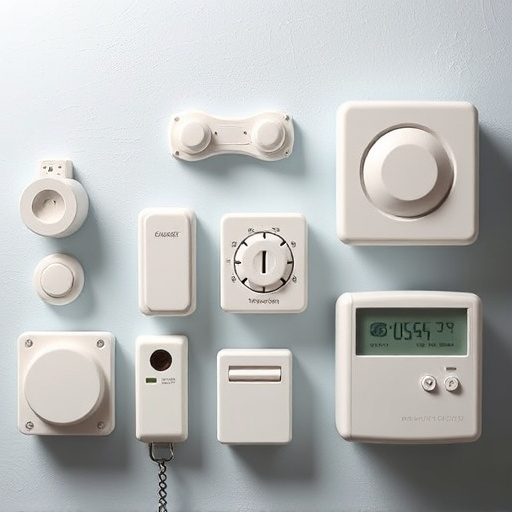Personal distress signals have evolved from traditional methods to sophisticated technological tools, especially with tracking capabilities integrated into devices like Personal Safety Sirens. These sirens, powered by long-lasting batteries, emit loud alarms and transmit help signals, ensuring faster emergency responses. Optimizing the Personal Safety Siren Battery Life is critical for effective deployment in remote or hazardous locations. Manufacturers address this through advanced technologies, weatherproof designs, and durable construction. These devices offer peace of mind, real-time location data, and automatic fall detection, enhancing safety for outdoor enthusiasts, travelers, and solo dwellers. Future advancements promise improved Personal Safety Siren Battery Life and integrated technology for real-time monitoring and response.
Personal distress signals with tracking capability are transforming personal safety, offering vital tools in emergencies. This article delves into the essentials of understanding these signals, exploring how integrating tracking technology enhances safety measures significantly. We discuss battery life considerations for continuous protection and highlight practical applications, culminating in a look at future prospects that promise to revolutionize personal safety. Key terms: Personal Safety Siren, Battery Life
- Understanding Personal Distress Signals: The Basics
- Incorporating Tracking Technology: Enhancing Safety
- Battery Life Considerations for Continuous Protection
- Practical Applications and Future Prospects
Understanding Personal Distress Signals: The Basics
Personal distress signals have evolved from simple verbal or physical cues to sophisticated technological tools, particularly with the integration of tracking capabilities. Understanding these signals is crucial for personal safety, especially in situations where immediate assistance is necessary. The basics involve recognizing both internal and external indicators that signal distress. Internally, this might include heightened feelings of anxiety, panic attacks, or persistent depression, which could indicate a need for support or intervention. Externally, physical symptoms like rapid heart rate, sweating, or difficulty breathing can be signs of distress, requiring prompt action.
In today’s digital era, devices such as Personal Safety Sirens, powered by long-lasting batteries, offer advanced tracking features. These sirens are designed to emit loud alarms and transmit signals for help when activated, ensuring faster response times in emergencies. The battery life of these devices is a critical consideration; it should be sufficient to sustain the siren’s operation until assistance arrives or the user can safely reach help. Effective personal distress signals empower individuals to take control of their safety, providing peace of mind and potentially saving lives.
Incorporating Tracking Technology: Enhancing Safety
Incorporating tracking technology into personal distress signals has revolutionized personal safety. These advanced devices go beyond traditional alarm systems by providing real-time location data, ensuring swift response times in emergency situations. With GPS functionality and automatic fall detection, users can rest assured that help is on the way, even in remote areas where assistance might take longer to arrive.
The integration of tracking technology also offers peace of mind by monitoring battery life. Unlike conventional sirens with limited endurance, modern personal distress signals are equipped with long-lasting batteries or solar charging options, enabling continuous operation. This reliability means users can focus on their well-being without worrying about the device’s power source, making it an indispensable tool for outdoor adventures, remote work, or daily commutes in urban settings.
Battery Life Considerations for Continuous Protection
Personal Safety Sirens, designed to provide continuous protection, must consider battery life as a critical factor for effective deployment. These devices often operate in remote or hazardous locations where quick replacement or charging may not be readily available. Thus, manufacturers strive to develop sirens with extended battery life, ensuring they can operate reliably for extended periods without intervention.
Choosing a model with robust battery life allows users to rely on the siren’s distress signal without worrying about power failure. Advanced technologies like low-power modes and efficient circuitry contribute to this longevity. Moreover, weatherproofing and durable designs protect the battery from extreme conditions, further extending its lifespan. In the event of prolonged use, portable charging solutions or solar panels can supplement battery life, offering added peace of mind for personal safety in various environments.
Practical Applications and Future Prospects
Personal safety sirens with tracking capabilities offer a range of practical applications, especially in situations where immediate help is required. These devices can serve as powerful tools for individuals facing distress, allowing them to not only alert authorities but also provide precise location data. This feature is invaluable in remote areas or during emergencies where traditional communication methods might be compromised. With the ability to track an individual’s movement and send alerts, personal safety sirens can enhance peace of mind, especially for outdoor enthusiasts, travelers, or those living alone.
Looking ahead, the future prospects of these devices are promising. Improvements in battery life will extend their usability, ensuring they remain operational during extended periods of need. Moreover, integrating advanced tracking technology and communication systems could lead to real-time monitoring and response, potentially saving lives. As personal safety sirens become more sophisticated, they may evolve into indispensable companions for outdoor activities, remote work, or even everyday urban living, offering a sense of security and the freedom to explore with added confidence.
Personal distress signals with tracking capabilities have the potential to revolutionize personal safety. By understanding the basics of these signals and incorporating advanced tracking technology, individuals can enhance their protection in various situations. Despite concerns about battery life, continuous monitoring is achievable through thoughtful design and consideration of energy-efficient features. As these devices evolve, they offer promising practical applications and future prospects, ensuring folks are equipped with powerful tools to navigate potential dangers effectively.
